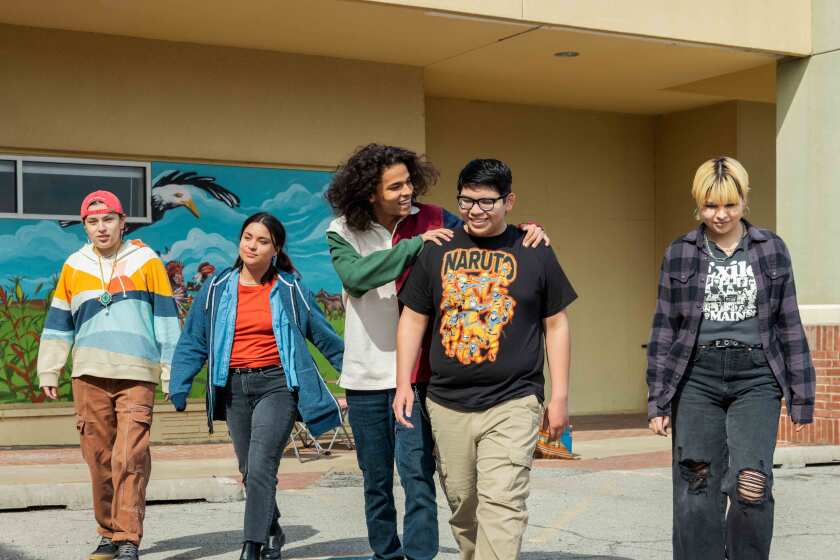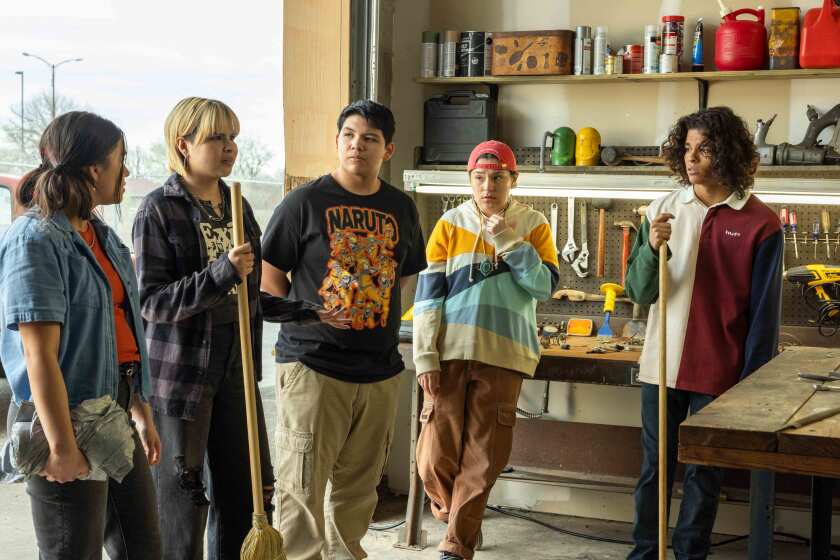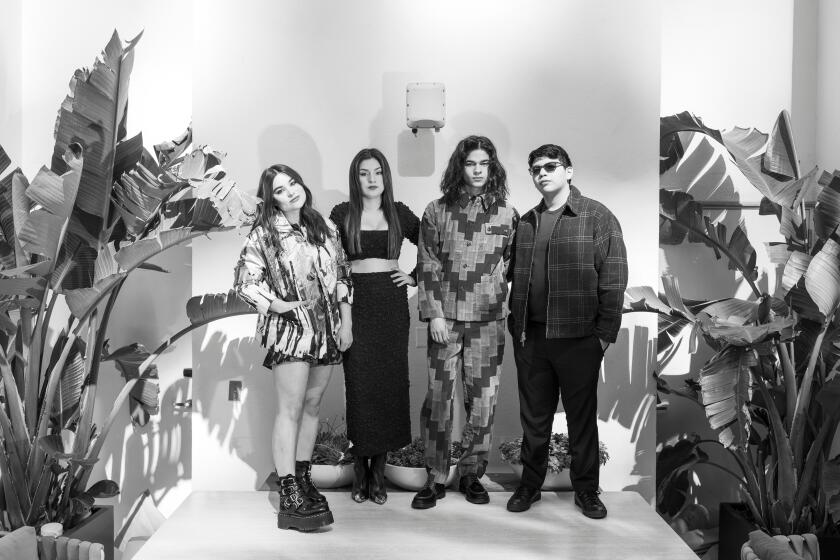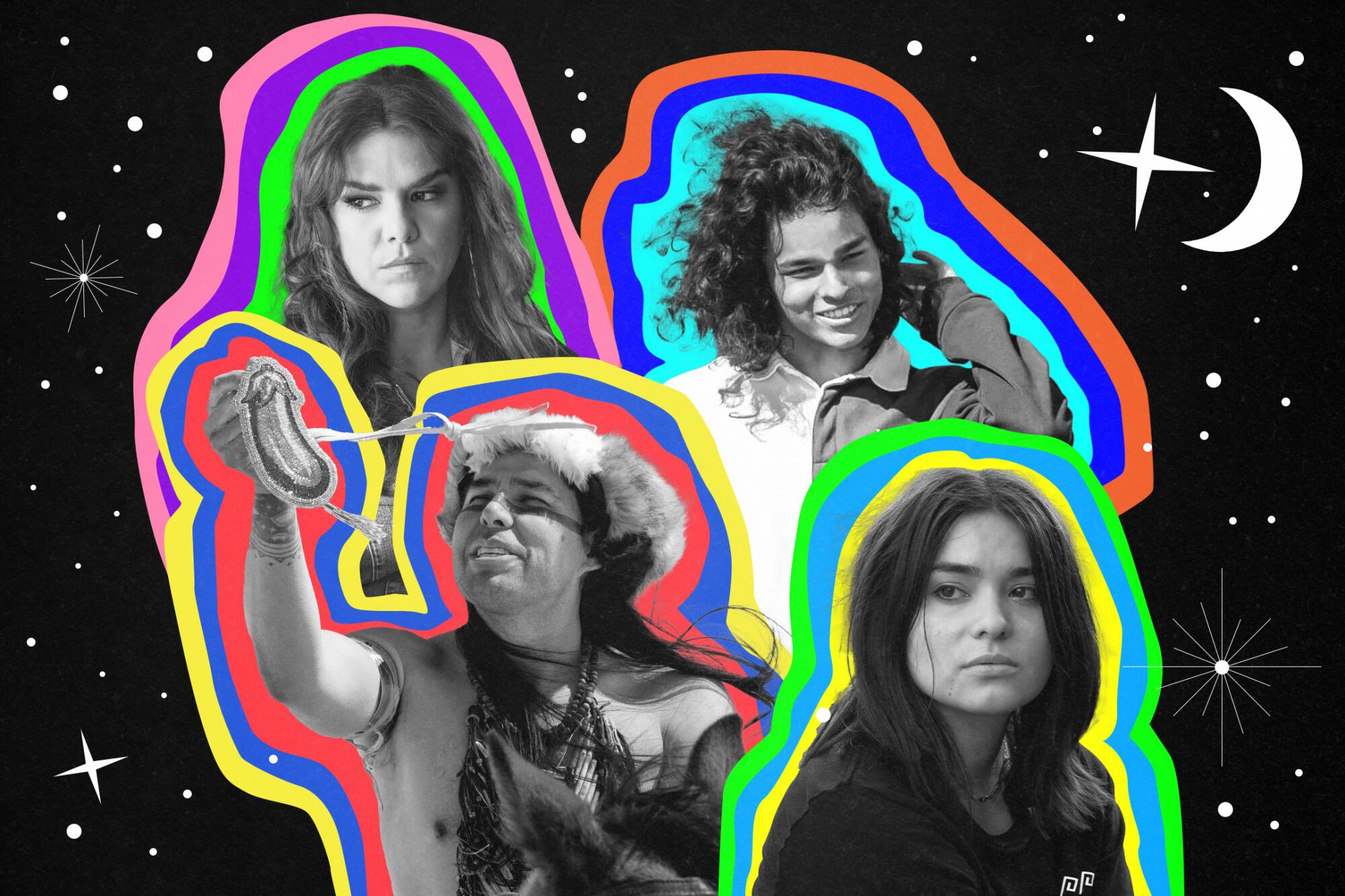
- Share via
This article contains spoilers for Season 3 of “Reservation Dogs,” including the finale.
This week brings us to the end of FX on Hulu’s beautiful “Reservation Dogs,” a comedy about Native American life that is checking out on its own terms after three seasons. Its teenage protagonists — Bear (D’Pharaoh Woon-A-Tai), Elora Danan (Devery Jacobs), Willie Jack (Paulina Alexis) and Cheese (Lane Factor) — drove the show, but it became increasingly the picture of a community in which “the elders,” sometimes unrespectable but always respected, counted for as much: a rare idea in American television.
Co-created and executive produced by Sterlin Harjo (a member of the Seminole nation with Muscogee ancestry) and Taika Waititi (Maori on his father’s side), it showcased not only brilliant Indigenous actors but writers and directors as well — including Jacobs, who wrote the series’ superb penultimate episode, a two-hander in which Elora finally meets her father, played by Ethan Hawke. Let’s hope it’s not the last we see of them — that this is a beginning, not an end.
L.A. Times TV critics Lorraine Ali and Robert Lloyd shared some thoughts about a show they both loved.
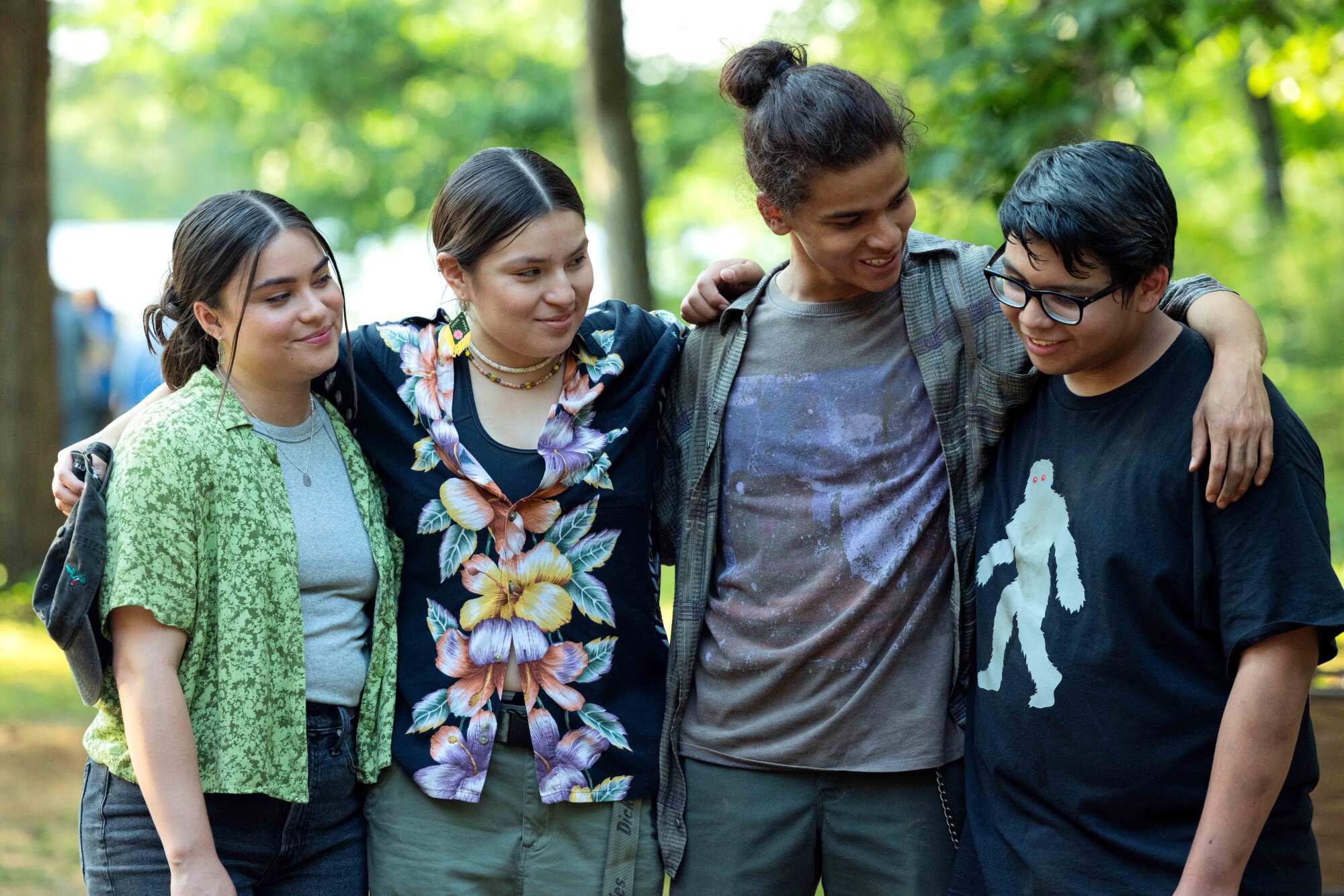
Lorraine Ali: Flaming Flamers. Canned tuna bingo at the Indian Health Center. Socially challenged spirits offering unsolicited advice to the living. I will miss “Reservation Dogs,” and how the show was able to wrap an Indigenous drama inside a dry comedy as it captured life on and around a rural Oklahoma reservation through the eyes of the folks who live there. Over its three seasons, the series did so many things well, from satirizing colonialist tropes about Indians, to honoring Native American traditions to illuminating the struggles and joys of life on the rez.
The Reservation Dogs’ quest to leave for California after the suicide of their friend Daniel opened the first season, but it was clear there was far more to this show than just the desire to get away. They wanted to figure out who they were, with centuries of history and culture in tow. Do you go modern, or keep it “tradish”? They did a lot of both.
Longtime indie filmmakers Danis Goulet and Blackhorse Lowe discuss their work on “Reservation Dogs” and how the series bolstered Native American representation onscreen and behind the camera.
Robert Lloyd: There are so many things I cherish about this show; even before we got to know the characters, we got to know the place — the lovely east Oklahoma landscape, perhaps never photographed for television, and what people built on it, with neighborhoods and buildings that would be considered too ordinary, or distressed, or blandly institutional by the usual standards of the medium. That it’s a series shot where it takes place — Harjo grew up nearby — rather than, say, some vaguely similar stretch of Canada — is invaluable. The show opens one’s eyes — assuming you’re not already from there, or familiar with it — to new sorts of beauty, and this is as true of the actors as of the land.
That grounding also allows for some well-integrated magic realism, and of the introduction of a spirit world that lives close by and looks and sounds and acts a lot like ours. The paranormal and mythological phenomena believed in by tribal police officer Big (Zahn McClarnon, who at least will be staying in view as the lead in AMC’s “Dark Winds”), and for which he’s initially mocked, turn out to be true — Bigfoot’s real, as is Deer Lady (Kaniehtiio Horn), who gives Bear a ride as he’s trying to make his way back home from the coast.
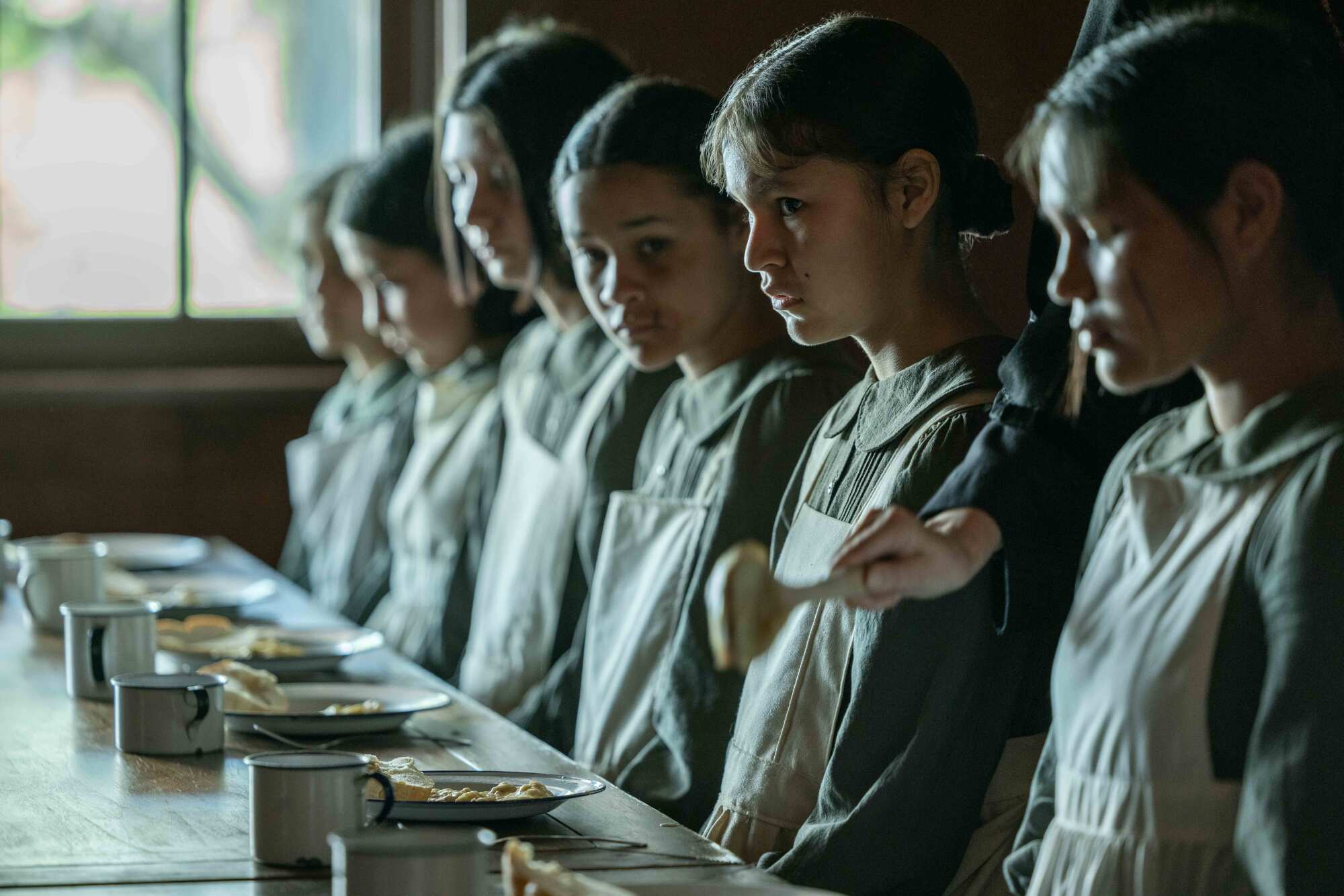
Ali: Season 3’s “Deer Lady” episode was phenomenal. In exploring her origin story, they brought in the brutal legacy of Native American boarding schools. Indigenous kids were ripped from their families and thrown into these abusive, often deadly schools that sought to assimilate them. But “Reservation Dogs” reversed Hollywood’s idea of “the other” by showing it from the Native perspective, so viewers understood what the brown kids were saying while their white captors spoke gibberish. It’s a masterful moment, made possible by representation behind and in front of the camera.
The cast and creators also did a stellar job poking fun at the usual sanctimonious portrayals of Indigenous traditions and culture. I laughed out loud when the ghost of an ancestor appeared to a depressed Hokti (Lily Gladstone), Daniel’s mother and Willie Jack’s aunt, who’s serving time in prison. “Your vibe sucks,” says the spirit. “I walked the Trail of Tears and I smiled more than you.” The star of all visitations, buckskin-clad, foulmouthed William “Spirit” Knifeman (Dallas Goldtooth), should be celebrated in the annals of television history as a singularly fantastic comedic character.
I also love how the series goes off on these seemingly random tangents, storywise and stylistically (one episode borrows from the film “Dazed and Confused,” another from “Ocean’s 11”), but eventually bring it all together, showing how everything, and everyone, is connected.
Tiffany Anders, the music supervisor for the FX on Hulu series, discusses working with creator Sterlin Harjo on finding music with “heart and soul.”
Lloyd: “Reservation Dogs’’ reminded me of another great FX show, “Atlanta,” in that respect, in the way it moved from what seemed like a traditionally focused narrative into stories that followed individual characters, and not just the four kids, but their parents and uncles and aunties, related by blood or community. (A word of praise here for soulful Sarah Podemski as Bear’s mother, Rita.) The respect paid to older characters — from Cheese letting an old woman with dementia believe he’s her grandson in Season 1 to Willie Jack’s apprenticeship this season to medicine man Fixico (Richard Ray Whitman), and not ignoring that generation’s own checkered past, really is remarkable and gratifying. Not to mention that it brought together a supergroup of older-generation Indigenous actors (including Gary Farmer, 70, Wes Studi, 75, and at last this season the great Graham Greene, 71) in one place — and even in the same shot. And it was exciting on some extra-textual level to watch them working with the younger actors — whose emotional truth can’t be understated — as a mirror of the community they’re embodying.
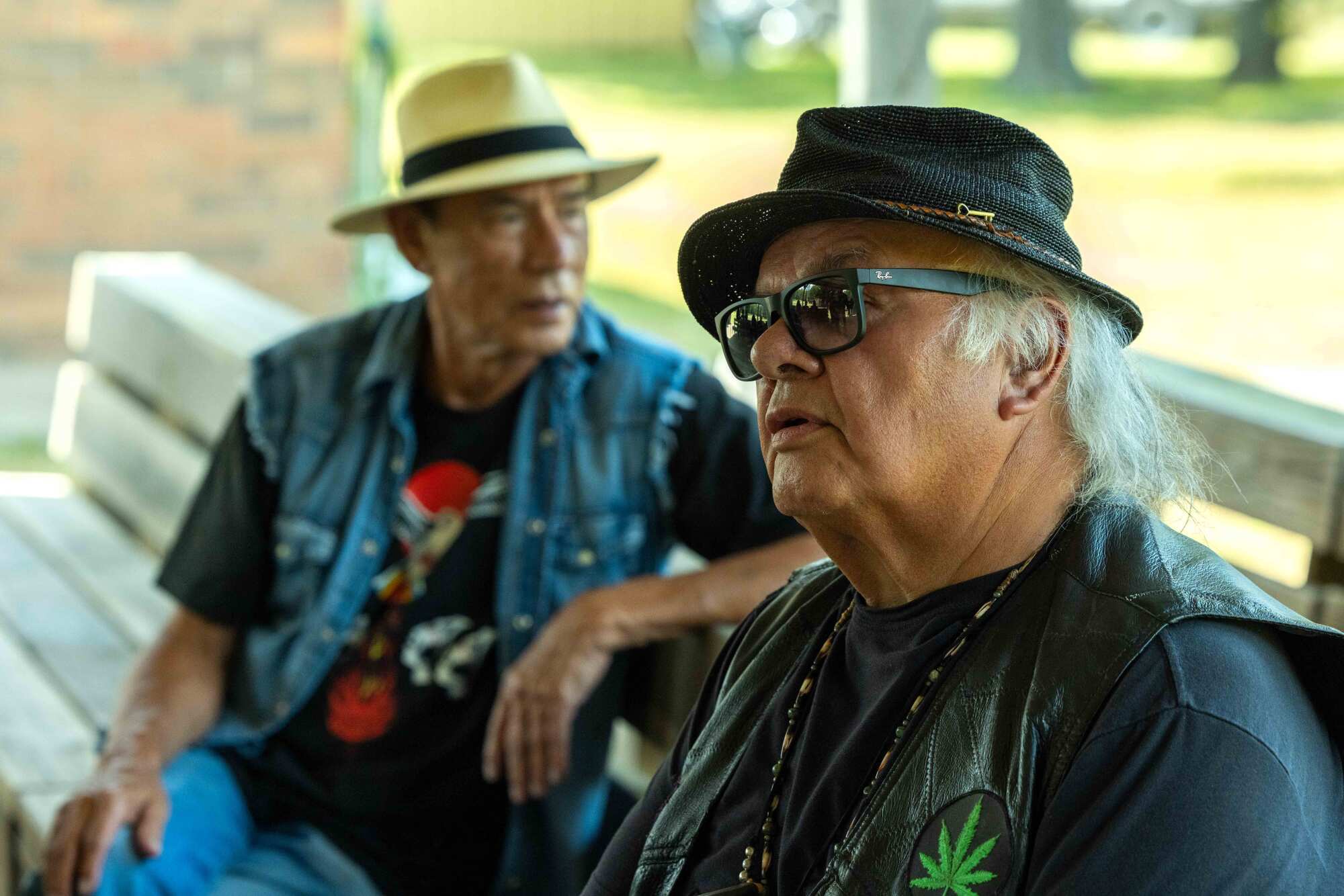
It’s a mosaic approach that intimates that any person’s story is part of something bigger, that the world extends beyond what sliver of it we’re shown onscreen — even as the characters’ own worlds opened up. And like “Atlanta,” with which “Reservation Dogs” also shared an exquisite sense of place, the creators called time on a series that could certainly have continued, if critical respect and a devoted audience are anything to go by. I do have to say, as sad as I am to see these people go, I applaud the choice — the three-season arc seems right to me, as the series moved from concentrating on the Rez Dogs and their initial quest to a wider view, then bringing every character of note back for the finale, as the question of whether to leave home becomes a matter of determination, not desperation.
Just as Hollywood is discovering the young Indigenous stars, they’re finding it’s possible for a TV production to embrace both industry and community.
Ali: I also respect “Reservation Dogs” for ending the show on its own timeline and terms. What else should we have expected from a show that was so uniquely independent in vision and execution? And the finale was the perfect sendoff. It centered on the death and burial of an elder, where everyone in the community showed up to send him off. Youth and elders argued about where to position the grave, aunties and nieces joked around in the kitchen. They were saying goodbye but they’d always be connected, no matter where their journeys might take them next, on or off the rez.
More to Read
The complete guide to home viewing
Get Screen Gab for everything about the TV shows and streaming movies everyone’s talking about.
You may occasionally receive promotional content from the Los Angeles Times.
